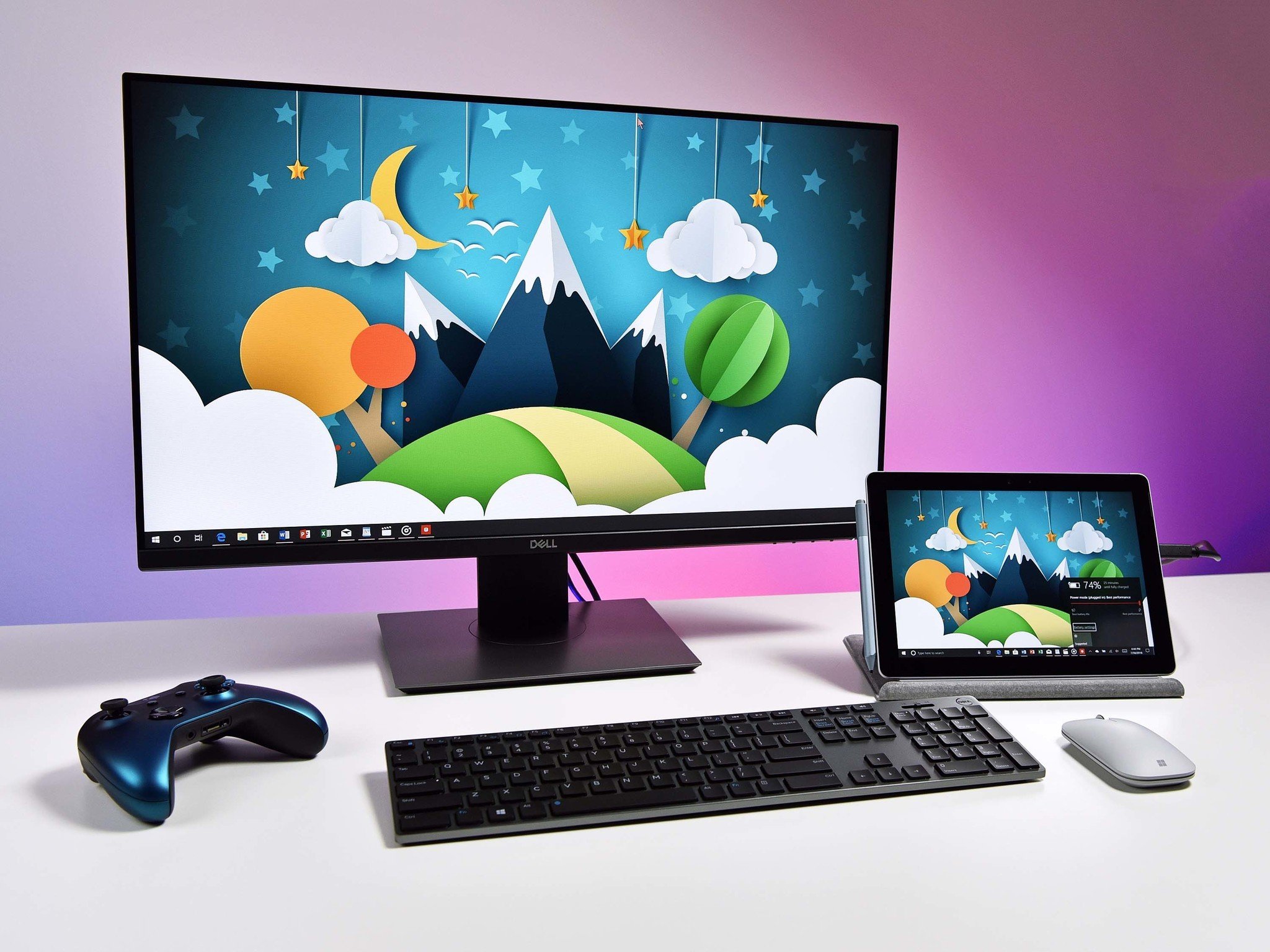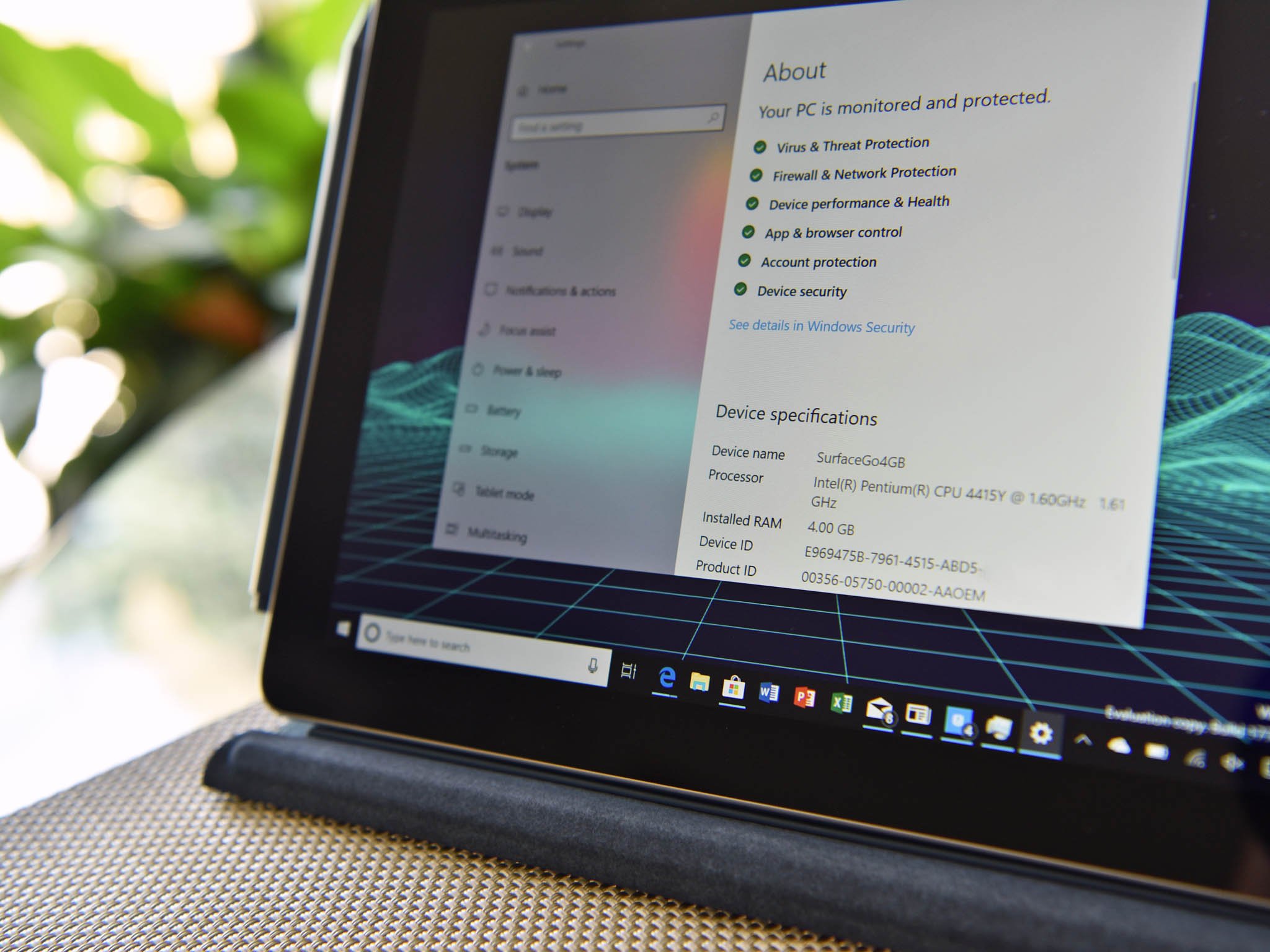Do you need the more expensive Surface Go? Probably not.
Don't let the naysayers stop you — the more affordable 4GB Surface Go is better than you might think.

Most major media outlets published their Surface Go reviews based on the more expensive version with 8GB of RAM and 128GB of storage. Many have also outright dismissed the entry-level $399 model with just 4GB of RAM and slower 64GB of eMMC storage.
But how much do the higher-end specs matter? In our initial test of storage speeds the 128GB model has the speed advantage (1,100 MB/s) over the 64GB model (260 MB/s), but what is the real-world impact?
Over the last few days, I've been using the 4GB model just as I did with the 8GB one, and my conclusion is this: There's just not that much difference.
Is Surface Go slow?

In an earlier writeup, I compared both Surface Go models for storage read and write speeds. Below is the comparison table along with a 7,200 RPM hard-disk drive for comparison, along with some other devices for context.
Surface Go (128 SSD) vs Surface Go (64 eMMC)
CrystalDiskMark (higher is better)
| Device | Read | Write |
|---|---|---|
| Surface Go (eMMC) | 260 MB/s | 145 MB/s |
| Surface Go (SSD) | 1,185 MB/s | 133 MB/s |
| Surface 3 (eMMC) | 149 MB/s | 33 MB/s |
| Dell XPS Tower (HDD) | 133 MB/s | 150 MB/s |
| Surface Laptop | 648 MB/s | 244 MB/s |
| Surface Pro 4 | 758 MB/s | 159 MB/s |
| Surface Pro 2017 | 847MB/s | 801 MB/s |
| Surface Book | 1,018 MB/s | 967 MB/s |
| Surface Pro 2017 | 1,284 MB/s | 963 MB/s |
| Surface Book 2 | 1,411 MB/s | 1,202 MB/s |
On paper, the SSD in the 128GB model is quite impressive even compared to more expensive Surface devices.
All the latest news, reviews, and guides for Windows and Xbox diehards.
The Surface Go's 64GB memory is about one and half times as fast as the Surface 3's for read speed, while it's about a four times improvement in our sequential write results. (For those harping on the why eMMC is faster than SSD, it's just testing variation - these are the same speeds).
Related: eMMC vs. SSD storage: What's the difference?
How you use it matters

Part of the problem with Surface Go – and any PC, for that matter – is figuring out how a person intends to use the device. Surface Go is aimed at education markets (K-12), firstline workers (FLWs), general consumers, and families. Still, I have had people ask Does Surface Go run AutoCAD? And, What about Adobe Lightroom? Or, Is it any good for editing video?
In my usage with Surface Go, I used it as how I thought it is intended: for light computing. Here's a list of what exactly that includes:
- Watching videos.
- Word processing.
- Email.
- Light gaming (X-Morph: Defense, Little Triangle, and Die for Valhalla!).
- Social media.
- News and web surfing.
- Photo editing via Adobe Elements 2018.
- Listening to music.
For all these tasks, the Surface Go with 4GB of RAM and 64GB of storage performed just fine. In fact, telling the difference between the entry-level model and the more expensive one was difficult.
One user on Reddit asked if Surface Go was right for them. Here is what they were looking for:
I'm not a huge gamer anymore and any serious data crunching I do is handled on my home server or desktop, so it's less about power for me and more about having a Netflix machine/eReader in bed/on flights that's also able to pop over and respond to a quick email or handle some document reading/annotating when needed or light browsing when desired … I'm basically looking for an iPad Pro that doesn't lock me into iOS and gives me the functionality to use the software I like inside an open filesystem I'm familiar with.
If your computing needs and expectations are similar, Surface Go – either version – will be just fine.
Surface Go RAM management handles itself

Pro PC users tend to enjoy micromanaging their devices, including paying attention to RAM usage. But this is mostly an unnecessary step for a casual-use PC like the Surface Go. Windows 10 does an admirable job of managing RAM without being a detriment to performance. Windows 10 at 4GB of RAM is more optimized to use that memory if you set it and forget it.
Where more RAM matters is taking Surface Go out of S-mode and proceeding to install apps like Chrome, Steam, iTunes (out of the Store), Battle.net, and Razer Synapse. Those apps tend to install "helper" apps that run in the background and chew up resources over time. While they offer some benefit to the user, PC performance will likely degrade over time. Throwing more RAM at it is one solution, but it's a costly one. Limiting yourself to just apps from the Microsoft Store is another option, but that too has tradeoffs, like not being able to use an app you really need.
Don't dismiss the entry-level Surface Go

The takeaway from my experience in using the $399 Surface Go is that if you are using this as secondary PC for the couch, bed, on a flight, the coffee shop, or to keep the kids busy in the car, there's no discernable difference in performance between it and the more expensive $550 model. So buy the cheaper version and save some money.
For students looking for a light computer for the class to take notes, respond to emails, handle social, or run Microsoft Word, there is no real need to get the more expensive one unless you can afford it or need that storage space. In other words, buy the cheaper version and save some money.
There are 40GB of usable storage on the 64GB Surface Go out of the box with full Microsoft Office already preinstalled. Combine that with microSD expansion and the self-limiting nature of a 10-inch PC, and I think users will be surprised that they're not cramming it full of high-volume games or apps.
The whole "slow" eMMC versus "fast" SSD matters, but only for loading huge games or applications – and even there, it's still much faster than a hard disk drive.
But, if you do need 8GB of RAM – and to be clear, some of you will – or you want more internal storage, grab the Surface Go $550 model.
Here are a couple of buyer's tips:
- If you're Surface Go will be use as a full-time PC, go for the 8GB model.
- If Surface Go will be a secondary PC for light computing, the 4GB model should be perfectly fine.
The negative hype related to the 4GB of RAM and eMMC storage is mostly coming from people who have never used it. Try it and judge for yourself, because you may realize it's better than what you've been told.
Related Surface Go reading

Daniel Rubino is the Editor-in-chief of Windows Central. He is also the head reviewer, podcast co-host, and analyst. He has been covering Microsoft since 2007 when this site was called WMExperts (and later Windows Phone Central). His interests include Windows, laptops, next-gen computing, and wearable tech. He has reviewed laptops for over 10 years and is particularly fond of 2-in-1 convertibles, Arm64 processors, new form factors, and thin-and-light PCs. Before all this tech stuff, he worked on a Ph.D. in linguistics, performed polysomnographs in NYC, and was a motion-picture operator for 17 years.

